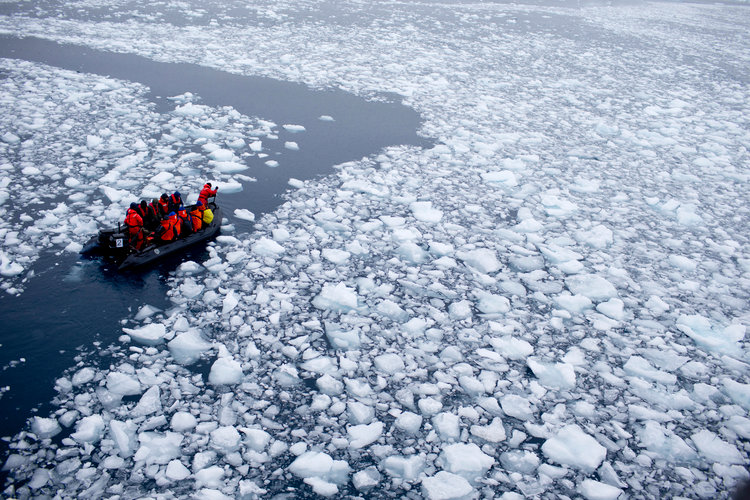Antarctica is melting at an unprecedented rate. Between 1979 and 2017, Antarctic ice loss increased by a factor of six, causing sea levels to rise by half an inch. That’s according to a new study recently published in the Proceedings of the National Academy of Sciences.
An international team of scientists from the University of California, Irvine (UCI), NASA’s Jet Propulsion Laboratory (JPL), and Utrecht University in the Netherlands conducted the “longest-ever assessment of remaining Antarctic ice mass”.
The team looked at aerial and satellite images of 18 Antarctic regions, which included 176 basins and some surrounding islands, to see how they had changed over the past four decades.
They discovered that from 1979 to 1990, Antarctica lost about 40 billion tonnes (44 billion tons) of ice each year. While this is certainly a lot, from 2009 to 2017 this number increased to an unthinkable 252 billion tonnes (278 billion tons).
It seems that after slowly rising between 1979 and 2001, the rate of ice loss suddenly jumped by 280 percent between 2001 and 2017.
This ice loss contributes to sea level rise, and the team found that Antarctica’s melting ice caused sea levels around the world to rise by 1.27 centimeters (0.5 inches) during the decades focused on in the study.
“That’s just the tip of the iceberg, so to speak,” said lead author Eric Rignot, a professor at UCI and senior project scientist at the JPL, in a statement. “As the Antarctic ice sheet continues to melt away, we expect multi-meter sea level rise from Antarctica in the coming centuries.”
And Antarctica isn’t the only contributor to sea level rise – a recent study found that our oceans are warming at a faster rate than expected due to climate change, and warmer waters mean rising seas. This, in turn, threatens coastal communities as flooding becomes more extreme.
Somewhat unexpectedly, the researchers also found that East Antarctica is an important contributor to ice loss, more so than we thought. A study from last year found little to no loss of ice from East Antarctica, notes the Associated Press.
“The Wilkes Land sector of East Antarctica has, overall, always been an important participant in the mass loss, even as far back as the 1980s, as our research has shown,” said Rignot.
“This region is probably more sensitive to climate [change] than has traditionally been assumed, and that’s important to know, because it holds even more ice than West Antarctica and the Antarctic Peninsula together.”
It’s no secret that the frozen continent is melting more rapidly now due to human-induced global warming. To prevent climate catastrophe, we urgently need to reduce our greenhouse gas emissions by switching to renewable, non-polluting fuels.
“As climate warming and ozone depletion send more ocean heat toward [the sectors of Antarctica losing the most ice], they will continue to contribute to sea level rise from Antarctica in decades to come,” Rignot said.
Source: IFLSience



